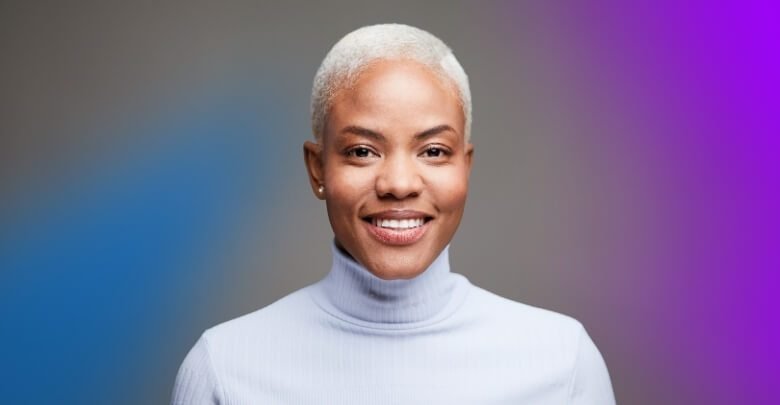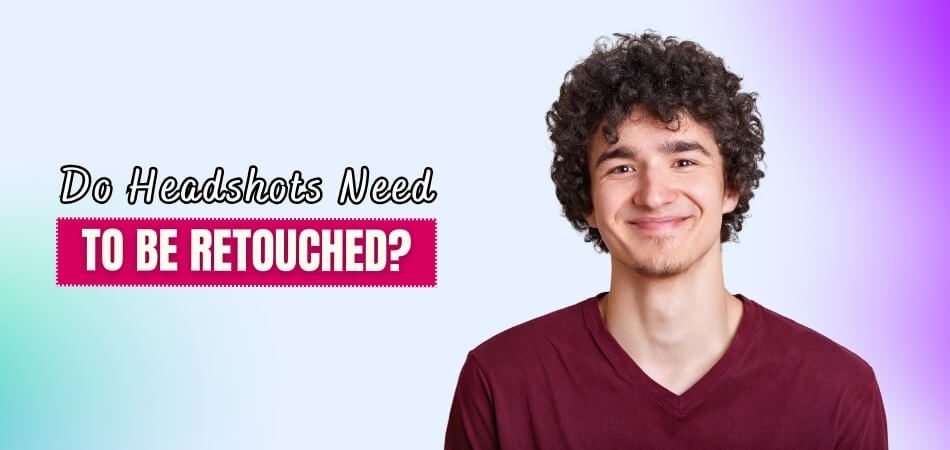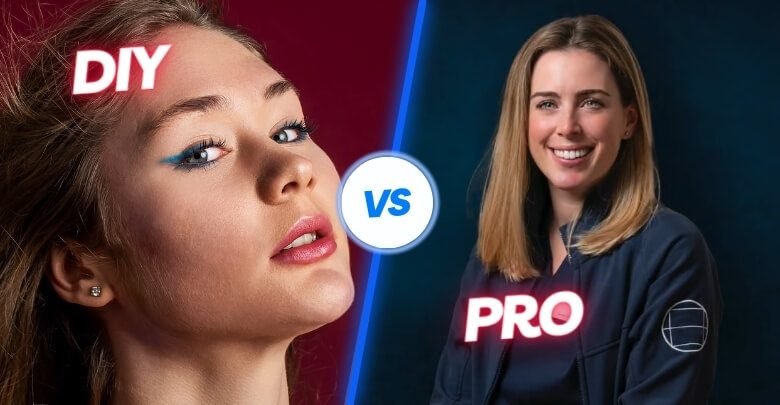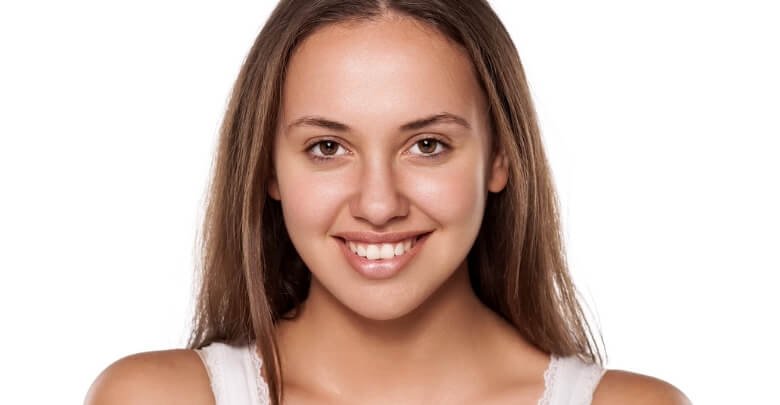As the digital age progresses, professionals in various fields find themselves understanding the importance of headshot photography more and more. These photographs create first impressions and convey one’s professional brand and identity. However, after taking a headshot shot of yourself you might start to wonder, “Do headshots need to be retouched?”
Yes, professional headshots require retouching to optimize the subject’s appearance, ensure quality, and align with industry standards. Effective retouching can correct lighting issues, remove blemishes, and subtly enhance features to present a polished and appealing image.
As we dive deeper into the technical aspects of headshot retouching, join us in exploring the transformative effects it can have on your professional image in the rest of this article.
What is Retouching in Photography?
Retouching in photography involves refining a photo to increase its visual appeal and quality. This process corrects imperfections like blemishes or uneven lighting. It improves features such as colors and textures, ensuring every detail looks its best.

Photographers often rely on high-end photo retouching services to achieve a flawless finish. These services meticulously adjust various elements, from skin texture to background details. The goal is to produce a striking image that stands out in any portfolio or publication.
Recognizing the value of retouching can transform a simple photo into a powerful tool for storytelling or branding. This technique is vital for professionals aiming to project an impeccable image. It’s not just about alteration; it’s about perfecting a vision.
Do Headshots Need to Be Retouched?
Yes, headshots need retouching. This process enhances the photo’s professional quality and appeal. It’s crucial for making a strong, positive impression in professional settings. Here are some reasons why headshots should be retouched:

Enhancing Visual Appeal
Retouching improves the overall aesthetic of a headshot, making it visually pleasing. It can bring out the subject’s finest features, ensuring they look their best. Colors and contrasts are adjusted to pop just right. This is key for captivating and engaging images.
Correcting Imperfections
Even the most stunning shots can have flaws like spots or uneven skin tones. Retouching smooths out these imperfections subtly. The result is a cleaner, more polished look. This makes the headshot appear more professional and refined.
Adjusting Lighting and Exposure
Lighting can make or break a photograph. Retouching ensures balanced and flattering lighting. Shadows and highlights are adjusted to complement the subject. Proper lighting is essential for creating a realistic and striking image.
Optimizing Background Distractions
A distracting background can divert attention from the subject. Retouching helps minimize or remove distractions. The focus remains firmly on the subject, strengthening headshot effectiveness. This is crucial for maintaining professional standards.
Ensuring Consistency
Consistency is key for professionals who need multiple headshots. Retouching ensures all images in a series match in tone and style. Consistency is vital for branding and professional presentations. It helps maintain a uniform and cohesive look.
Preparing for Diverse Uses
Headshots are used across various media, from the web to print. Retouching ensures versatility for all formats. It adjusts resolution and scales to fit different uses. This adaptability is crucial for maintaining image quality across platforms.
Professional vs. DIY Retouching – Which is Better?
When it comes to retouching headshots, choosing between professional and DIY approaches is crucial. Each method has its own advantages and disadvantages. Being aware of these can help you decide which is right for your specific needs.

Benefits of Professional Retouching
- Expertise and Skills: Professionals possess advanced skills and an eye for detail, ensuring high-quality results.
- Advanced Tools: They use sophisticated software that offers more precision and options than basic tools.
- Time-Saving: Outsourcing to professionals saves time, allowing individuals to focus on other important tasks.
- Consistent Quality: Professionals provide consistency across images, which is crucial for branding and professional appearance.
- Stress-Free: Hiring a professional removes the burden of learning and performing complex edits.
- Tailored Results: Professionals can personalize retouching to suit specific industry standards or personal preferences.
- Access to Updates: Professionals stay updated with the latest trends and technologies in photo editing.
Benefits of DIY Retouching
- Cost-Effective: Doing it yourself avoids professional services costs.
- Full Control: You maintain complete control over the creative process and final outcome.
- Skill Development: DIY retouching improves your photo editing skills over time.
- Instant Modifications: You can make immediate changes without waiting for a professional’s schedule.
- Personal Satisfaction: Adding personal touches to your photography gives you a sense of accomplishment.
Limitations of Professional Retouching
- Higher Cost: Professional services can be expensive, especially for high-volume or complex projects.
- Less Personal Control: Relying on professionals might limit personal input in the editing process.
- Turnaround Time: Depending on the workload, it might take longer to get the retouched photos back.
- Over-Editing Risk: There’s a risk of over-editing, which can result in an unnatural look if not communicated properly.
- Dependency: Regular use of professional services may lead to dependency, reducing photo editing self-sufficiency.
Limitations of DIY Retouching
- Steep Learning Curve: It requires time and effort to learn sophisticated photo editing techniques.
- Inconsistent Quality: Without professional training, results might lack consistency.
- Time Intensive: DIY retouching can be time-consuming, particularly for complex edits.
- Limited Tools: Access to only basic or less advanced tools can reduce the quality of DIY retouching.
- Potential for Mistakes: Inexperience can lead to errors, impacting the professional appearance of the photos.
Choosing between professional and DIY retouching depends on your specific needs, budget, and skills. Consider these pros and cons carefully to ensure your headshots always look their best.
Tips for Natural-Looking Retouching in Headshots
Headshots can be dramatically improved by retouching, but enhancements must be subtle and natural. While refining the image, this approach maintains the subject’s authenticity. The following tips will help you achieve a good look in your headshot photos:

Focus on Subtle Skin Enhancements
Bring radiance to the skin by gently smoothing out uneven textures without erasing natural lines. Keep skin texture visible to retain a realistic texture. Adjust the skin tone evenly to avoid unnatural color patches. Focus on highlighting the subject’s finest features instead of transforming them.
Adjust Lighting for a Natural Effect
Balance the lighting to mimic natural light conditions, which are often flattering. Avoid over-brightening, which can create harsh shadows or highlight imperfections. Soften shadows gently rather than removing them entirely, to maintain depth. Make use of existing lighting conditions to complement natural skin tones.
Be Conservative with Eye Retouching
Eyes are the focal point of any headshot; make them pop naturally. Slightly enhance the eye’s brightness and contrast to draw attention without appearing artificial. Keep the natural eye color consistent, only enhancing clarity. Adjust the sharpness of the eyes to make them stand out, but avoid oversaturation.
Refine Hair without Overdoing It
Clean up stray hair to create a tidy look while keeping hair natural flow. Instead of drastically changing the hair color, enhance it subtly. Add slight volume to the hair for healthy, natural fullness. Ensure the hair texture looks realistic and matches the rest of the styling.
Keep the Background Simple and Clean
A clean and simple background ensures the focus remains on the subject. Remove any distracting elements subtly to keep the background uniform and unobtrusive. Enhance the background’s color to complement the subject’s tone without overpowering them. A minimalist approach often highlights the subject more effectively.
These tips will help you create polished, yet realistic headshots that retain the authenticity of the original. This balance is crucial for professional and engaging headshots that are both attractive and believable.
FAQ About Do Headshots Need to Be Retouched?
Here are some of the FAQs and their relevant answers for a clear concept of do headshots need to be retouched:
Should You Have Your Hair up for a Headshot?
It depends on the look you’re going for and your personal style. Both updos and down hairstyles can work well for headshots. Choose a hairstyle that makes you feel confident and reflects your professional image.
How Do You Look Pretty in a Headshot?
Focus on natural-looking makeup that enhances your features without appearing too heavy. Pay attention to your posture and smile genuinely to convey warmth and approachability. Choose clothing that complements your skin tone and fits well.
Is It Okay to Smile in a Headshot?
Yes, smiling in a headshot can convey friendliness and approachability, which are often desired qualities in professional and personal branding. However, the intensity of the smile should align with the context of the headshot and your desired image.
Can Headshots Be Retouched Too Much?
Yes, it’s possible to overdo retouching, resulting in an unnatural appearance that can undermine the credibility of your headshot. Retouching should aim to enhance your natural features subtly while maintaining authenticity.
What Aspects of a Headshot Can Be Retouched?
Common aspects that are often retouched include skin imperfections, blemishes, stray hairs, under-eye circles, and minor clothing wrinkles. Retouching can also adjust lighting and color balance to enhance overall appearance.
How Do I Ensure My Headshot Looks Professional?
Choose a skilled photographer who specializes in headshots and understands lighting, composition, and posing techniques. Communicate your goals and preferences clearly to ensure the final result aligns with your professional image.
Should I Retouch My Headshot Myself or Hire a Professional?
While basic retouching can be done by individuals with some skill in photo editing software, for best results, it’s recommended to hire a professional retoucher or work with a photographer who offers retouching services. They can ensure a polished and professional final product.
How Long Does It Take to Retouch a Headshot?
The time required for retouching can vary depending on the complexity of the edits needed and the skill level of the retoucher. Simple retouching may take a few minutes to an hour, while more extensive retouching can take several hours or even days.
Bottom Line
The significance of headshot retouching cannot be ignored in maintaining professional standards and increasing personal branding. Through processes that polish appearance and ensure consistency, retouching serves as a vital tool in both the personal and professional realms.
As we discussed above, there is a positive response to “Do headshots need to be retouched?”, particularly for those seeking a profound impact on their visual presentation. Choosing between DIY and professional methods depends on your specific needs and resources, as each offers distinct advantages and disadvantages.
By applying thoughtful, natural-looking techniques, retouched headshots can achieve a compelling balance of authenticity and refinement, making them indispensable in today’s visually driven world.